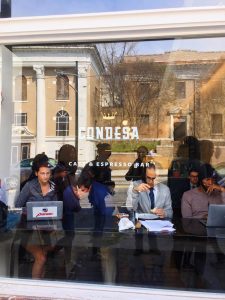
A coffee shop filled with white Americans but few African Americans. (Atlanta)
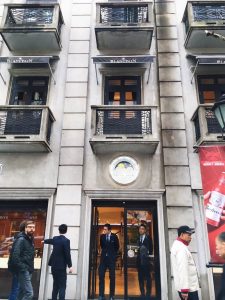
A store selling foreign watches patronized by local residents and foreigners. The clients of the store are Shanghainese. They dressed nicely in suits and ties. (Shanghai)
The trip to Auburn Avenue reminded me of the gentrification in my hometown Shanghai. It allowed me to see how gentrification is represented under distinct cultural backgrounds. Gentrification in Auburn Avenue shown in the first photo is more salient; thus you see only the white (the gentrifiers) in a coffee shop but few African Americans (the gentrified). In Shanghai, gentrification is less salient, mostly imperceptible; thus you see people from different walks of life patronizing the same place as well as local residents working for a foreign shop.
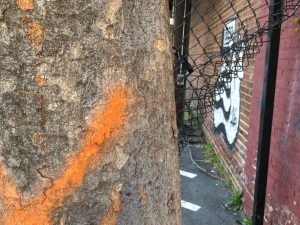
Graffiti and broken fences.
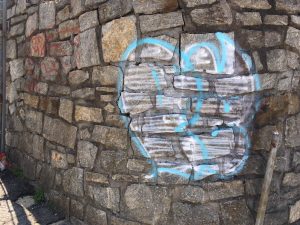
Graffito and cracked walls.
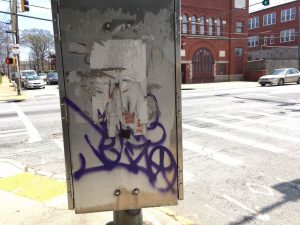
Graffito and torn advertisements.
The ubiquitous graffiti arrested my attention as I meandered in the avenue. In a gentrified area where a clean and tidy environment is presumed, the numerous graffiti serve as a silent rebellion against the city’s rapid development. Along with torn advertisements, broken fences and cracked walls, they remind people of the street’s non-gentrified past.

An old building with graffiti and paintings stands among the gentrified Auburn Avenue. (Atlanta)
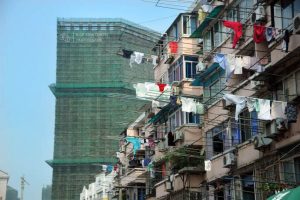
An old building with clothes hangers stands beside a new construction site. (Shanghai)
I recall the frequent uses of clothes hangers in Shanghai. Many residents still dry their laundries on this anachronistic rectangle hangers that appear messy even when they have better options. Like the graffiti, these clothes hangers serve the same function, namely, the representation of their local identity and an implicit rejection to the ongoing gentrification.
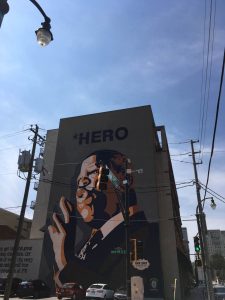
A new building with the portrait of Martin Luther King. (Atlanta)
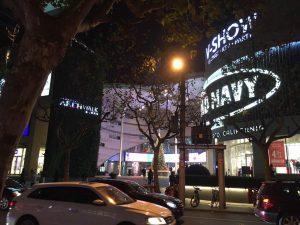
A new shopping mall near my neighborhood. Its shopping space mostly rented by foreign brands. (Shanghai)
The first picture shows a well-constructed building with a newly-painted portrait of Martin Luther King, the hero for the residents in Sweet Auburn. This combination of a historical figure and a modern building indicates how gentrification can elevate the efforts of the local residents to preserve their identity. In this case, gentrification serves as a method of identity preservation. In Shanghai, there is little evidence showing how gentrification can be used to preserve culture and identity. Due to historical reason and residents’ reserved disposition, most Shanghainese are more used to adjusting themselves to foreign cultures.
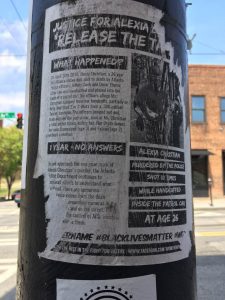
A fight for justice. An appalling murder.
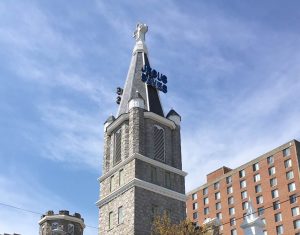
But “Jesus Saves”.
The first photo is a poster to the effect that an Atlanta native was shot to death by Atlanta Police Officers. The tag #blacklivesmatter# indicates that there is still a long way to go towards equality. I put the picture of the poster together with the sign “Jesus Saves” because I believe this sign mitigates their sorrow and encourages them to raise their voice under uncertainties (such as gentrification). Religion plays an important role in the residents’ lives and fosters spiritual wealth as well as community awareness when people gather together for one same belief.
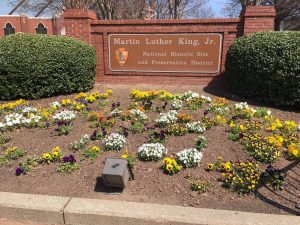
Preservation of sites. An emphasis in remembering the local history.
I questioned myself why I saw more of the avenue’s non-gentrification over its gentrification. That is when I realized that I was raised in a city where gentrification is profoundly embedded. No salient efforts can be seen to combat it due to the city’s history, the reserved disposition of local residents and an absence of spiritual solidarity. Here in Auburn Avenue I see people’s effort in combating and appropriating gentrification using arts, cultural investments and worships. They are actively engaged in the issue and are aware of the importance to emphasize their own identity and culture.